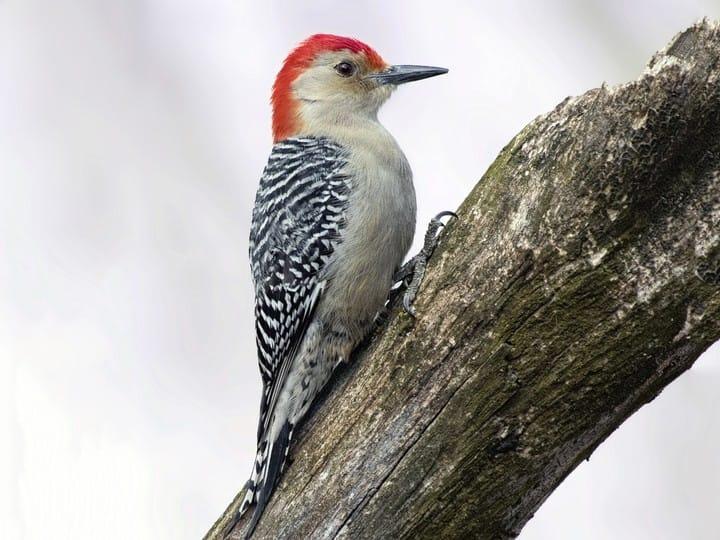Woodpeckers in Florida: Identification Tips and Habitat Preferences
Woodpeckers in Florida: Identification Tips and Habitat Preferences
Blog Article
Discover the Remarkable World of Woodpeckers: Everything You Required to Know
The world of woodpeckers is a world loaded with special actions, elaborate adjustments, and a diverse selection of types. From their environments and distribution patterns to their feeding routines and specialized anatomical functions, woodpeckers have actually long captivated the rate of interest of ornithologists and nature enthusiasts alike.
Woodpecker Habitats and Circulation
Woodpeckers inhabit a diverse variety of atmospheres worldwide, showcasing flexibility in their distribution patterns. These resilient birds are found in forests, forests, savannas, and deserts throughout numerous continents, demonstrating their ability to flourish in different climatic conditions. In North America, as an example, woodpeckers can be found in both coniferous and deciduous forests, utilizing their strong beaks to forage for bugs and produce nesting dental caries in trees. In Africa, particular woodpecker varieties have actually adjusted to dry atmospheres, such as the acacia forests, where they play an important function in managing insect populations.

Feeding Behaviors and Diet Regimen
Amongst the various aspects of their behavior, woodpeckers exhibit unique feeding routines and nutritional choices. These birds are largely insectivores, with a diet that includes ants, beetles, caterpillars, and other insects found in trees. Woodpeckers use their strong beaks to drill into the bark of trees, probing for insects and larvae hidden below the surface. Along with insects, woodpeckers also consume nuts, seeds, fruits, and sap. Some species have specialized tongues with barbed tips that help them extract insects from holes in timber.
Woodpeckers are recognized for their drumming actions, which offers not only to communicate with other woodpeckers yet additionally to find food. The fast drumming sound is created by the bird pecking on powerful surface areas like dead trees or metal poles. This actions can bring in bugs hidden in the timber, permitting the woodpecker to identify their existence and feed upon them.
Unique Adjustments for Tree Climbing
In their click this site experienced quest of bugs hidden within tree bark, woodpeckers have actually progressed amazing physiological attributes that furnish them with unique adjustments for effective tree climbing. Among the crucial adaptations is their zygodactyl feet, with 2 toes directing forward and two aiming in reverse, offering a solid hold on tree trunks. This specialized foot setup allows woodpeckers to hold on to vertical surfaces easily, enabling them to go up and down trees with agility. In addition, woodpeckers have tight tail feathers that serve as a helpful prop while they climb up, helping in equilibrium and stability. Their solid, chisel-like beaks check here are not only made use of for boring into wood yet likewise for clutching onto bark as they ascend tree trunks. In addition, woodpeckers have strong neck muscular tissues and a distinct head structure that take in the impact of continuous pecking, permitting them to climb up and down without creating harm to their minds. These adaptations display the unbelievable evolutionary style that makes it possible for woodpeckers to navigate trees with precision and effectiveness.
Diverse Woodpecker Types Worldwide
With over 200 different species spread across various habitats worldwide, the family of Picidae encompasses an amazing diversity of woodpeckers. These birds can be found in forests, woodlands, savannas, and also city locations, showcasing their flexibility to various atmospheres. From the famous Northern Flicker in The United States And copyright to the vibrant and elusive Crimson-backed Flameback in Asia, each woodpecker species exhibits unique characteristics in regards to tuft, habits, and habitat preference.
Woodpeckers differ substantially in dimension, with the small Downy Woodpecker measuring around 6-7 inches in size, while the effective Lineated Woodpecker can rise to 17 inches - Woodpeckers in Florida. Their beaks also can be found in different sizes and shapes, showing their feeding habits. Some types focus on removing bugs from tree bark, like the Acorn Woodpecker, while others, such as the Black-cheeked Woodpecker, eat fruits and seeds

Preservation Efforts and Challenges
Preservation efforts for woodpecker populaces are crucial in alleviating the influence of Visit Your URL habitat loss and other risks dealing with these varied bird varieties. Woodpeckers encounter various challenges to their survival, mainly because of logging, urbanization, environment adjustment, and intrusive varieties. To resolve these issues, conservation efforts focus on safeguarding and restoring woodpecker habitats, executing sustainable forestry practices, and raising awareness about the significance of these birds in communities.
One substantial obstacle in woodpecker preservation is the fragmentation of their environments, causing isolated populations that are more vulnerable to termination - Woodpeckers in Florida. Preservationists function to produce wildlife corridors and safeguarded areas that attach these fragmented environments, enabling woodpeckers to move in between various locations for feeding, reproducing, and shelter

Conclusion
In verdict, woodpeckers are remarkable birds with one-of-a-kind adaptations for tree climbing and feeding behaviors. Additional research and preservation activities are required to make certain the survival of woodpeckers in the wild.
Report this page